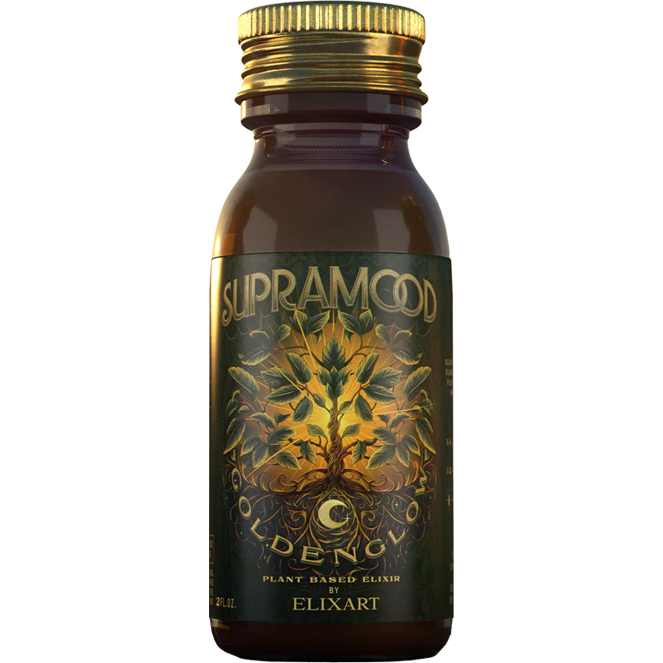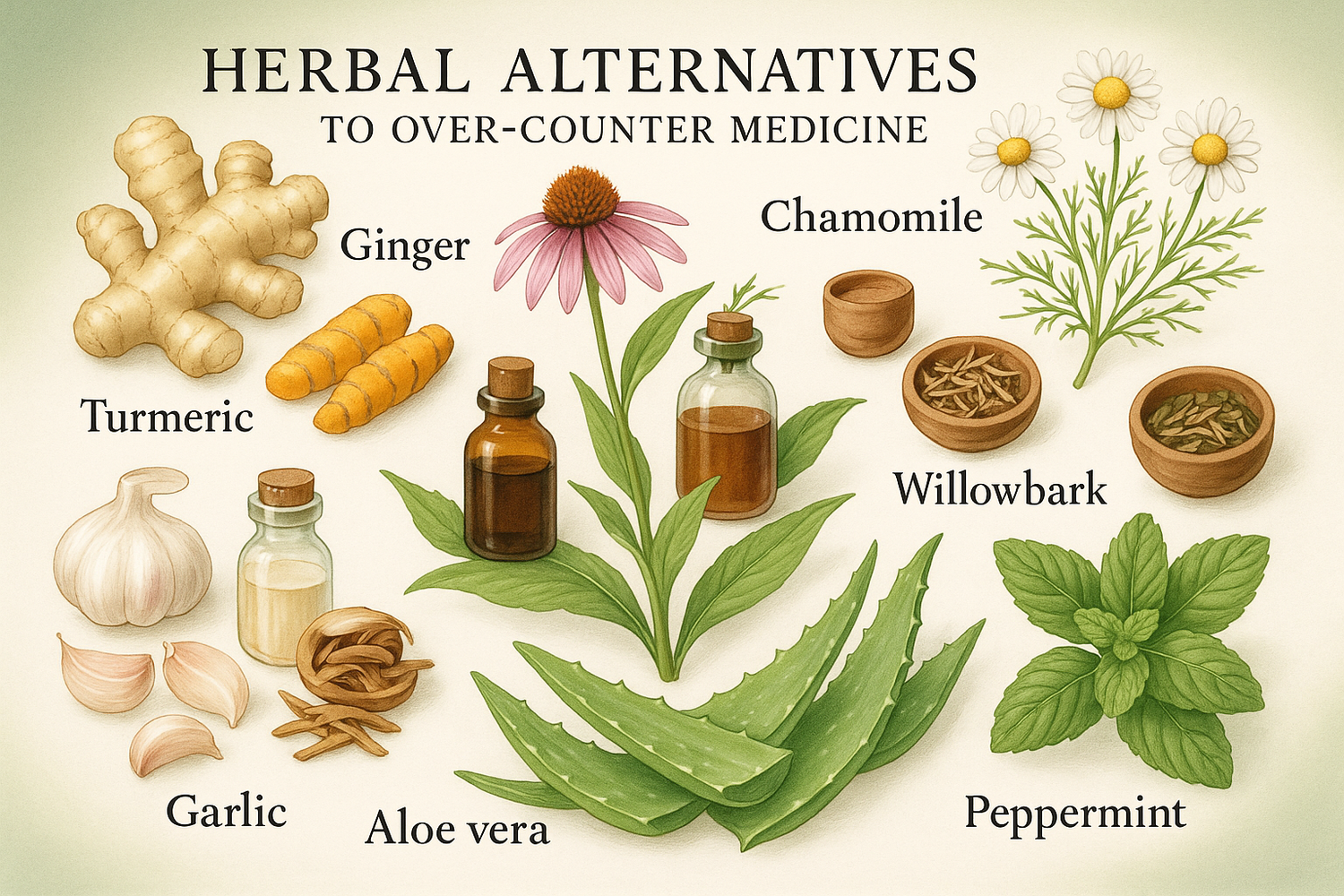The increasing interest in herbal alternatives to over-the-counter medicines reflects a broader trend towards embracing complementary and alternative medicine (CAM) and integrative medicine. Many individuals are seeking natural remedies that can complement or replace conventional treatments, aiming for a holistic approach to health.
Herbal alternatives encompass a wide range of products derived from plants, including supplements, teas, and topical applications. These natural remedies have been used for centuries across various cultures to address numerous health issues. CAM integrates these traditional practices with modern medical treatments, promoting a more comprehensive care model.
Integrative medicine combines conventional treatments with CAM practices, offering patients the benefits of both worlds. This approach emphasizes healing the whole person—mind, body, and spirit—rather than just treating symptoms.
This article aims to:
- Provide an overview of herbal alternatives and their role in modern healthcare.
- Explore different categories of herbal therapies.
- Discuss safety, effectiveness, and integration with conventional care.
- Offer guidance on finding reliable information and professional advice.
By understanding the potential benefits and limitations of herbal alternatives, you can make informed decisions about incorporating them into your health regimen.
Understanding Herbal Medicine
Defining Herbal Medicine and Its Role in CAM
Herbal medicine, also known as botanical medicine or phytomedicine, involves using plants or plant extracts for therapeutic purposes. It is a significant part of Complementary and Alternative Medicine (CAM), which includes different practices not usually found in conventional medical care. Herbal remedies aim to restore balance within the body and support natural healing processes.
A Brief History of Using Herbs for Healing Purposes
Historical records show that people have been using herbs for healing for thousands of years. Ancient civilizations like the Egyptians, Chinese, and Greeks wrote down their knowledge and use of medicinal plants. Traditional systems such as Ayurveda and Traditional Chinese Medicine (TCM) have always included herbal treatments as part of their holistic approaches. These ancient practices have changed over time, combining with modern scientific knowledge to create the herbal medicine we have today.
Common Herbal Supplements
Herbal supplements are made from different parts of plants like leaves, bark, roots, and flowers. You can find these supplements in various forms:
- Teas
- Tinctures
- Capsules
- Extracts
Each form aims to provide the healing benefits of the herbs effectively.
Overview of the Most Widely Used Herbal Supplements
Some herbal supplements have become popular because people believe they have health benefits:
- Echinacea: Often used to boost the immune system and reduce symptoms of colds.
- Garlic: Known for its cardiovascular benefits, garlic is believed to help lower blood pressure and cholesterol levels.
- Gingko Biloba: Commonly taken to improve cognitive function and memory.
- Ginseng: Valued for its potential to enhance energy levels and combat stress.
- St. John’s Wort: Frequently used as a natural remedy for depression and anxiety.
- Green Tea: Revered for its antioxidant properties which may contribute to overall health maintenance.
These popular herbal supplements show the wide range of plant-based remedies available today. Each supplement offers unique benefits and is chosen based on individual health needs. It's important to consult healthcare providers before starting any herbal supplement routine to ensure safety and effectiveness.
Understanding the foundational aspects of herbal medicine provides valuable context as you explore various categories of herbal alternatives in subsequent sections.
Exploring Different Categories of Herbal Alternatives

1. Mind-Body Therapies
Understanding the connection between the mind and body is crucial for healing. Mind-body therapies focus on the interactions among the brain, mind, body, and behavior, leveraging these connections to enhance physical health and well-being.
Examples of Mind-Body Therapies:
- Meditation: This practice involves focusing the mind to achieve a state of relaxation and mental clarity. Techniques vary from mindfulness meditation to transcendental meditation.
- Yoga: Combining physical postures, breathing exercises, and meditation, yoga promotes balance in the body and mind. It enhances flexibility, strength, and mental focus.
- Tai Chi: Often described as "meditation in motion," Tai Chi involves a series of slow, graceful movements accompanied by deep breathing. It helps reduce stress and improve balance.
- Biofeedback: This technique uses electronic devices to help individuals gain control over physiological functions such as heart rate, muscle tension, and blood pressure. These therapies have also shown promise in treating conditions like PTSD.
2. Biologically Based Practices
Biologically based practices employ substances found in nature—herbs, foods, vitamins—to promote health.
Working Principle:
These approaches harness natural ingredients to support bodily functions. They are often used to complement conventional treatments but require careful consideration due to potential interactions with other medications.
Common Examples:
- Herbal Supplements: Derived from plants, common supplements include Echinacea for immune support and St. John’s Wort for mood enhancement.
- Nutritional Supplements: Vitamins like Vitamin D or Omega-3 fatty acids play vital roles in maintaining health.
3. Manipulative and Body-Based Practices
Touch-based therapies involve manipulating the body’s structure to relieve pain, enhance function, and promote well-being.
Role of Touch:
Physical manipulation can stimulate blood flow, reduce tension, and improve alignment. These therapies often provide relief from chronic pain conditions such as back pain or arthritis.
Examples:
- Chiropractic Care: Involves spinal adjustments to alleviate musculoskeletal issues.
- Massage Therapy: Utilizes various techniques to manipulate muscles and soft tissues.
- Osteopathy: Focuses on the body's musculoskeletal system through manual therapies.
4. Energy Healing
Energy healing revolves around the concept that vital energies flow through the human body and can be harnessed for healing purposes.
Concept:
These therapies aim to balance or restore energy fields within the body. Practitioners believe disruptions in energy flow can lead to illness.
Popular Forms:
- Reiki: A Japanese technique employing hands-on healing to channel energy into the patient.
- Qi Gong: Combines movement, meditation, and controlled breathing to enhance energy flow.
- Therapeutic Touch: Involves moving hands over
2. Biologically Based Practices
Biologically based practices in herbal medicine focus on using naturally occurring substances to promote health and treat disease. These approaches harness the inherent properties of plants, minerals, and other natural elements. The working principle revolves around the idea that these biological materials can offer therapeutic benefits by interacting with the body's biochemical pathways.
Key Components of Biologically Based Practices:
- Herbal Supplements: Derived from various parts of plants such as leaves, roots, flowers, and seeds. Common examples include Echinacea for immune support, Garlic for cardiovascular health, and Gingko biloba for cognitive function.
- Vitamins and Minerals: Often used in conjunction with herbal supplements to address specific nutrient deficiencies or health conditions. For instance, Vitamin C is used for its antioxidant properties.
- Probiotics: Beneficial bacteria that support gut health and boost the immune system. Found in foods like yogurt or taken as dietary supplements.
Mechanisms of Action:
These practices rely on the active ingredients within natural substances to interact at a molecular level with the body:
- Antioxidant Activity: Many herbal supplements possess antioxidant properties that help combat oxidative stress and reduce inflammation.
- Anti-inflammatory Properties: Certain herbs like Turmeric contain compounds that can modulate inflammatory pathways.
- Immune System Modulation: Herbs such as Astragalus are known to enhance immune function by stimulating white blood cell activity.
Biologically based practices often integrate into broader complementary and alternative medicine (CAM) strategies, providing a holistic approach to health by combining them with mind-body therapies, manipulative practices, energy healing, and whole medical systems.
3. Manipulative and Body-Based Practices
Manipulative and body-based practices focus on using touch and physical manipulation to promote healing. These therapies include practices such as:
Chiropractic Care
Chiropractic care involves diagnosing and treating mechanical disorders of the musculoskeletal system, especially the spine. By making adjustments to the spine, chiropractors aim to improve alignment, reduce pain, and enhance overall body function.
Massage Therapy
Massage therapy uses various techniques to manipulate the muscles and soft tissues of the body. Different styles like Swedish, deep tissue, and sports massage can help decrease stress, boost circulation, and relieve muscle tension.
Osteopathy
Osteopathy takes a holistic approach where practitioners use manual techniques to treat and strengthen the musculoskeletal framework. Osteopathic treatments may include stretching, gentle pressure, and resistance methods to improve mobility and support the body's natural healing processes.
These therapies use touch to create physical changes that contribute to well-being. The link between touch and healing is deeply ingrained in human biology; tactile stimulation can trigger the release of endorphins, lower cortisol levels, and activate relaxation responses.
Practitioners of manipulative therapies often work alongside other healthcare professionals in integrative medicine settings. This collaborative approach allows for comprehensive care that addresses both physical symptoms and underlying causes. It can be particularly beneficial for conditions involving chronic pain, stress-related disorders, and musculoskeletal problems.
It is crucial to choose qualified practitioners when seeking manipulative therapies. Look for licensed or certified professionals who follow industry standards to ensure safety and effectiveness.
4. Energy Healing
Energy healing focuses on using the body's own vital energies to promote healing and well-being. It is based on the idea that there are energy fields, also known as life force, qi, or prana, that flow in and around the body. When these energy fields are disrupted or blocked, it can cause physical, emotional, or spiritual imbalances.
Popular Forms of Energy Healing:
- Reiki: A Japanese technique where practitioners use their hands to channel energy into the patient's body, promoting relaxation and healing.
- Qigong: An ancient Chinese practice combining movement, meditation, and controlled breathing to enhance the flow of qi.
- Therapeutic Touch: Involves practitioners' hands moving over a patient's body to detect and manipulate energy fields.
Principles of Energy Healing:
- Balance: Restoring balance within the body's energy systems.
- Flow: Ensuring free flow of energy throughout the body.
- Harmony: Achieving harmony between mind, body, and spirit.
Benefits Reported by Practitioners:
- Reduced stress
- Enhanced emotional health
- Improved physical well-being
Considerations for Using Energy Healing:
- Professional Guidance: Seek certified practitioners for proper guidance.
- Complementary Use: Often used in conjunction with other CAM practices like mind-body therapies and biologically based practices.
Energy healing offers an alternative path for those seeking holistic methods beyond conventional medicine.
5. Whole Medical Systems
Whole medical systems are complete approaches to healthcare that have developed independently of or alongside conventional medicine. They are based on comprehensive theories and practices, often passed down through generations as traditional knowledge.
Examples of Whole Medical Systems:
- Traditional Chinese Medicine (TCM): This system includes acupuncture, herbal medicine, and dietary therapy, emphasizing balance and harmony within the body.
- Ayurveda: Originating in India, this holistic approach focuses on maintaining balance among the body's three doshas (Vata, Pitta, Kapha) through diet, herbal treatments, and lifestyle practices.
- Homeopathy: Based on the principle of "like cures like," homeopathy uses highly diluted substances to stimulate the body's self-healing abilities.
- Naturopathy: Combining modern scientific knowledge with traditional and natural forms of medicine, naturopathy emphasizes prevention and self-healing through natural therapies such as nutrition, exercise, and herbal remedies.
These whole medical systems incorporate different types of therapies and practices:
- Mind-body therapies: Techniques that focus on the connection between the mind and body, such as meditation, yoga, and hypnotherapy.
- Biologically based practices: The use of natural substances like herbs, vitamins, and dietary supplements for healing purposes.
- Manipulative and body-based practices: Physical therapies that involve manipulation or movement of the body, like chiropractic care or massage therapy.
- Energy healing: Modalities that work with the body's energy fields to promote healing, such as Reiki or acupuncture.
Instead of just treating specific symptoms, these whole medical systems provide a wide range of treatment options aimed at supporting overall well-being.
Safety, Effectiveness, and Integration: Key Considerations

Ensuring Safety and Quality of Herbal Alternatives
When exploring herbal alternatives, it's important to prioritize their safety and quality. Unlike conventional medicines, herbal supplements don't have the same strict regulations from the FDA. This means that the quality and strength of herbal products can vary widely.
FDA Regulations and Quality Standards
- FDA Regulation: Herbal supplements aren't regulated as strictly as pharmaceuticals by the FDA. It's up to the manufacturers to make sure their products are safe for consumers. However, if a product is found to be unsafe or if its claims are misleading, the FDA can take action.
- Standardized Manufacturing: Having standardized manufacturing processes is crucial. Without them, there can be inconsistencies in the dosage and purity of herbal supplements. Reputable manufacturers often follow Good Manufacturing Practices (GMP) to ensure high-quality products.
- Clinical Trials: Conducting clinical trials for herbal supplements has its own challenges. While some herbs have been extensively studied, others don't have strong scientific evidence to support their effectiveness. This is why it's important for consumers to rely on well-documented research and consult healthcare professionals.
Interaction with Conventional Medicines
Herbal supplements can interact with conventional medications, sometimes causing negative effects. For example:
- St. John's Wort can make birth control pills and antidepressants less effective.
- Ginkgo Biloba may increase the risk of bleeding when taken with blood thinners.
To avoid potential interactions, it's essential to talk to your healthcare providers before adding herbal supplements to your routine.
Integrating Herbal Medicine with Conventional Care
An integrative medicine approach combines traditional medical treatments with complementary therapies like herbal medicine. This holistic framework aims to address all aspects of health – physical, emotional, and spiritual.
Collaboration Between Practitioners
- Team-Based Care: Working together as a team, complementary and alternative medicine (CAM) practitioners and conventional healthcare providers can provide better care for patients. By communicating effectively, they can consider all aspects of a patient's health.
- Education and Training: It's important for both CAM practitioners and conventional healthcare providers to learn about each other's approaches. This mutual understanding promotes respect and leads to improved patient outcomes.
In conclusion, while herbal alternatives show promise, it's crucial to ensure their safety through proper regulation, standardized manufacturing, and guidance from professionals. Integrating these alternatives within conventional care frameworks requires collaboration between all healthcare practitioners for the best results.
Evaluating the Efficacy of CAM Therapies
Evaluating the effectiveness of Complementary and Alternative Medicine (CAM) therapies can be challenging. There are several obstacles when it comes to conducting clinical trials for CAM therapies:
- Variability in Herbal Formulations: Herbal products used in CAM therapies can have different compositions and strengths, making it difficult to ensure consistency in treatment.
- Lack of Placebo Controls: Creating placebo controls for CAM therapies is not always straightforward, especially when it involves herbal supplements or other non-traditional treatments.
- Limited FDA Regulation: Unlike conventional medicines, herbal supplements are not always regulated by the FDA, which means there may be inconsistencies in their manufacturing processes and quality.
The Impact of Variability in Herbal Formulations
Clinical trials require consistent and standardized formulations to ensure accurate results. However, the lack of uniformity in herbal supplements can affect trial outcomes, making it challenging to draw definitive conclusions about their efficacy.
This inconsistency can also lead to varying levels of active ingredients in herbal products, which can impact both their safety and effectiveness as treatments.
Understanding Interactions with Conventional Medicines
Another challenge in evaluating CAM therapies is understanding how they interact with conventional medicines. Some herbal supplements may interfere with prescription drugs, either reducing their effectiveness or causing adverse effects.
For example, St. John's Wort, a popular herbal remedy for depression, has been found to interact with certain antidepressant medications, making them less potent. This highlights the importance of an integrative medicine approach, where CAM practitioners work closely with conventional healthcare providers to monitor these interactions and ensure patient safety.
The Need for Rigorous Clinical Trials
Despite these challenges, it is essential to conduct rigorous clinical trials to validate CAM therapies. These trials can provide valuable insights into:
- The appropriate dosage guidelines for specific CAM treatments
- Any potential side effects or risks associated with these therapies
- The overall effectiveness of CAM therapies compared to standard treatments
By establishing clear evidence through well-designed studies, CAM therapies can gain wider acceptance within the medical community as viable treatment options for certain conditions.
Ensuring Safety and Quality through Regulations
To address some of the challenges mentioned earlier, it is crucial to have proper regulations and quality standards in place for herbal alternatives:
- FDA Regulation: Strengthening FDA regulations on herbal supplements can help ensure their safety, efficacy, and consistent manufacturing processes.
- Industry Standards: Encouraging adherence to industry-wide quality standards for herbal products can promote transparency and reliability in their production.
By implementing these measures, we can enhance patient safety and confidence in using CAM therapies as complementary or alternative options alongside conventional medical treatments.
Integrating Herbal Medicine with Conventional Care
Integrating herbal medicine with conventional care requires careful consideration and collaboration. One of the critical aspects is ensuring FDA regulation and standardized manufacturing for herbal supplements. Unlike conventional medicines, herbal supplements do not undergo the same rigorous approval process by the FDA, which raises concerns about their quality and safety. Healthcare professionals play a vital role in guiding patients on the safe use of these supplements.
Understanding interaction with conventional medicines is another key area. Herbal remedies can interact with prescription drugs, sometimes enhancing or diminishing their effects. For instance:
- St. John's Wort may reduce the effectiveness of birth control pills.
- Ginkgo Biloba could increase bleeding risk when taken with blood thinners.
An integrative medicine approach encourages the combination of complementary and alternative medicine (CAM) practices with conventional treatments. This holistic perspective involves collaboration between CAM practitioners and conventional medical care providers to create comprehensive treatment plans.
The role of healthcare professionals in such integration cannot be overstated. Doctors, naturopaths, and pharmacists should work together to:
- Evaluate existing clinical trials on herbal remedies.
- Monitor patient outcomes.
- Ensure that any use of herbal supplements does not compromise the effectiveness of conventional treatments.
This collaborative effort ensures that patients receive balanced and safe care, leveraging both traditional medical knowledge and natural healing methods.
Finding Reliable Information and Guidance
Navigating the world of herbal alternatives requires access to trustworthy information. To make informed decisions, consider these reliable sources:
Reputable Websites and Databases
- National Center for Complementary and Integrative Health (NCCIH): Offers evidence-based information on various herbal supplements.
- MedlinePlus: A service of the National Library of Medicine providing details on herbs, supplements, and their effects.
- ConsumerLab.com: Independent tests and reviews of dietary supplements, including herbs.
Professional Associations
Engaging with qualified practitioners ensures you receive sound advice. Look for professionals affiliated with these associations:
- American Herbalists Guild (AHG): Provides a directory of certified herbalists.
- National Certification Commission for Acupuncture and Oriental Medicine (NCCAOM): Lists certified practitioners in acupuncture and Chinese herbal medicine.
Books and Literature
Consult well-researched books such as The Herbal Drugstore by Linda B. White and Steven Foster, which offers practical insights into using herbal remedies.
Consulting Healthcare Providers
Always discuss your use of herbal supplements with your healthcare provider. They can help navigate potential interactions with conventional medicines and ensure safe usage.
Finding reliable information about herbal alternatives to over-the-counter medicines is crucial for safe and effective use. Trustworthy sources, professional associations, literature, and open communication with healthcare providers are key components in this journey.
Final Thoughts
Taking a holistic approach to health means understanding the connection between your body, mind, and environment. Herbal alternatives to over-the-counter medicines are a way to improve your well-being that fits with this idea. These remedies come from plants and have been used for centuries based on traditional knowledge and modern research.
Why Should You Think About Using Herbal Alternatives?
Here are some reasons why you might want to consider using herbal alternatives:
- Natural Sources: Herbs like Echinacea, Garlic, and Ginkgo biloba have properties that can be good for you.
- Fewer Side Effects: Many people say they have fewer problems when they use herbs instead of man-made drugs.
- Complementary Use: You can take herbs while also getting regular treatments, but it's important to talk to a professional first.
Key Benefits of Integrating Herbal Medicine
Adding herbal alternatives to your health routine can give you:
- Better Well-being: Helps improve your overall health by treating the root causes of problems, not just the symptoms.
- Personalized Care: Lets you get treatments that are made just for you based on what you need and what's going on with your body.
- Sustainable Practices: Often includes ways of growing and collecting plants that don't hurt the environment.
The search for being healthy is something that never stops. By using herbal remedies carefully and in a way that won't cause harm, you can help your body heal itself like it should while also keeping nature safe. Make sure to talk with doctors or other healthcare providers so they can help you use these alternatives in the best way possible.
FAQs (Frequently Asked Questions)
What is the objective of the article?
The objective of the article is to explore the importance of herbal alternatives, complementary and alternative medicine (CAM), and integrative medicine in comparison to conventional medicine.
What are some common herbal supplements?
Some common herbal supplements include plant-based remedies and popular herbal supplements that have been widely used for healing purposes.
How can we understand the mind-body connection in healing?
Understanding the mind-body connection in healing involves exploring mind-body therapies, which play a significant role in the holistic approach to health.
What is the role of FDA regulations and quality standards in herbal supplements?
The role of FDA regulations and quality standards is crucial in ensuring the safety and quality of herbal alternatives, as it helps in standardizing manufacturing processes and maintaining high-quality products.
What are the challenges in conducting clinical trials for CAM therapies?
Challenges in conducting clinical trials for CAM therapies include issues related to FDA regulation, standardized manufacturing, and interaction with conventional medicines, which require careful consideration and collaboration between CAM and conventional medical care practitioners.
Where can reliable information about herbal medicine be found?
Reliable information about herbal medicine can be found from professional associations for CAM practitioners, which provide credible sources for herbal medicine information.







Leave a comment
This site is protected by hCaptcha and the hCaptcha Privacy Policy and Terms of Service apply.